In den Favelas auf den Hügeln von Rio de Janeiro leben die Ärmsten der Armen. Rocinho ist der größte Slum Lateinamerikas, empfängt mittlerweile jedoch Touristen. Die Favela Santa Marta in Botafogo gilt seit 2010 sogar als offizielle Sehenswürdigkeit von Rio.
Als Favela bezeichnet man die Armenviertel an den Randgebieten von brasilianischen Städten. Diese wurden zumeist auf Hanglagen illegal errichtet und haben daher auch ihren Namen: Favela heißt auch eine brasilianische Kletterpflanze und zielt darauf ab, dass die Bewohner der Favela zu ihren Behausungen den Hang hinauf klettern müssen.
Inhaltsverzeichnis
BILDER: Favelas in Rio de Janeiro
Fotogalerie: Favelas in Rio de Janeiro
Die Ärmsten der Armen Rios
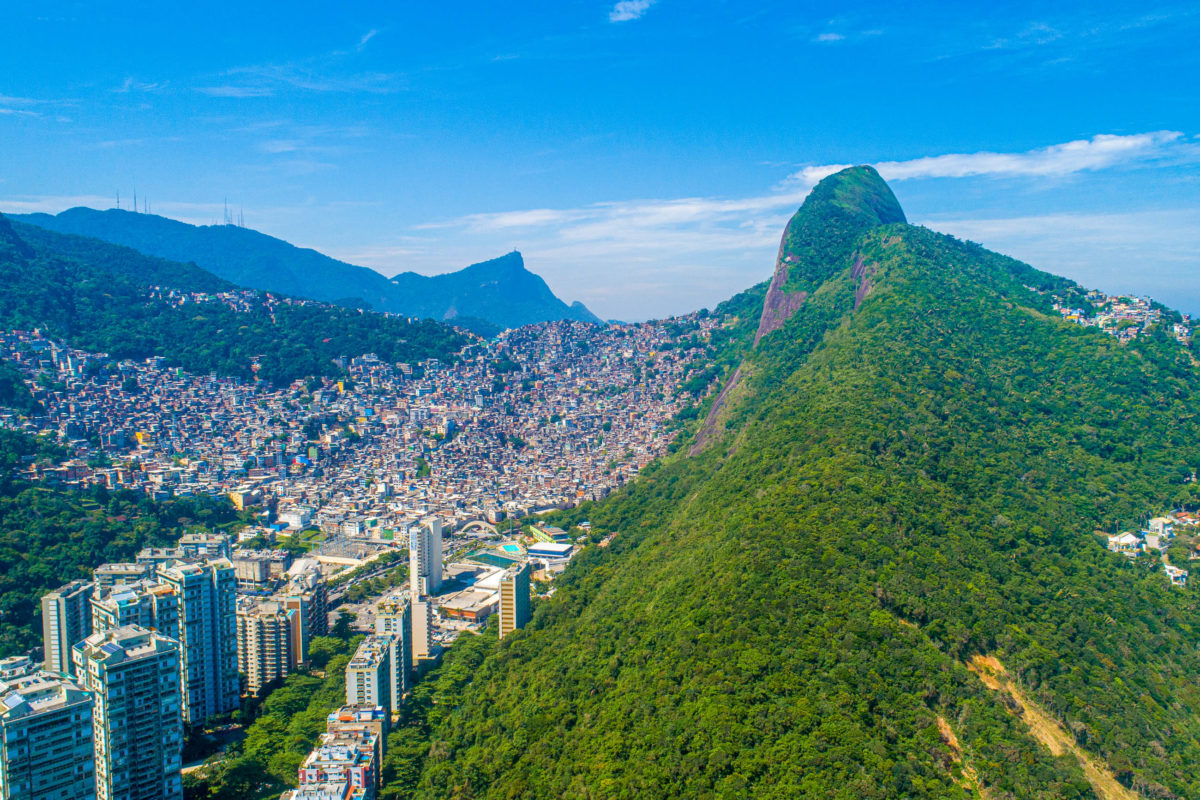
Im Süden von Rio de Janeiro befindet sich die größte Favela in ganz Lateinamerika, genannt Rocinha. Von den Straßen Rios nahe der Copacabana aus ist sie gut sichtbar. Die ersten Hütten der Favela wurden aus primitivsten Mitteln erbaut. Mittlerweile beginnt sich die Lage der Ärmsten Rios langsam zu bessern und die Häuser bestehen bereits aus Holz oder Stein und auch die Strom- und Wasserversorgung wird zunehmend ausgebaut.
Öffentliche Transportmittel wurden aufgrund der illegalen und unstrukturierten Errichtung der Behausungen nicht eingeplant. Rocinha ist daher nur schwer zu erreichen, viele Menschen dort müssen einen täglichen Arbeitsweg von bis zu eineinhalb Stunden in Kauf nehmen.
Rios Favelas als Top-Lage und Sehenswürdigkeit

Die Bewohner von Rocinha haben dennoch einen Vorteil. Aufgrund der Hanglage im Süden Rios haben sie einen wunderbaren Ausblick auf Rios Häusermeer, das von grünen Hügeln umschlossen wird.
Die Möglichkeit, mit dieser einzigartigen Lage Geld zu machen, haben einige Favela-Bewohner beim Schopf ergriffen und vermarkten nun gut gelegene Häuser mit Ausblick auf Rio de Janeiro. Dies zieht mittlerweile nicht nur arme Leute in eine Favela. Dadurch kommt es zu einer langsamen Vermischung der Gesellschaftsschichten.
In die brasilianischen Favelas wagt man sich als Tourist normalerweise nur als williges Raub- und Mordopfer oder mit unerschütterlichem Gottvertrauen. Langsam aber sicher wird dies allerdings anders. Die Politik von Rio de Janeiro versucht in Hilfsprogrammen die Erschließung der allgemeinen Versorgung in den Favelas voranzutreiben. So erhält auch der Tourismus zunehmend Einzug in die Favelas.
Ein Besuch von Rocinho war früher gefährlich und nicht zu empfehlen, hier hatten einst die Gangs und Drogenbosse Rios das Sagen und Kriminalität stand an der Tagesordnung. Mittlerweile sind die Bewohner äußerst freundlich, hilfsbereit und erfreut über interessierte Urlauber, die ihr Zuhause kennenlernen möchten. Sogar geführte Touren gibt es zu buchen – mit dem nötigen Respekt gegenüber den Einheimischen.
Wenn ihr eine Favela hautnah erleben wollt, ist allerdings Santa Marta die erste Wahl!
Santa Marta – die steilste Favela von Rio
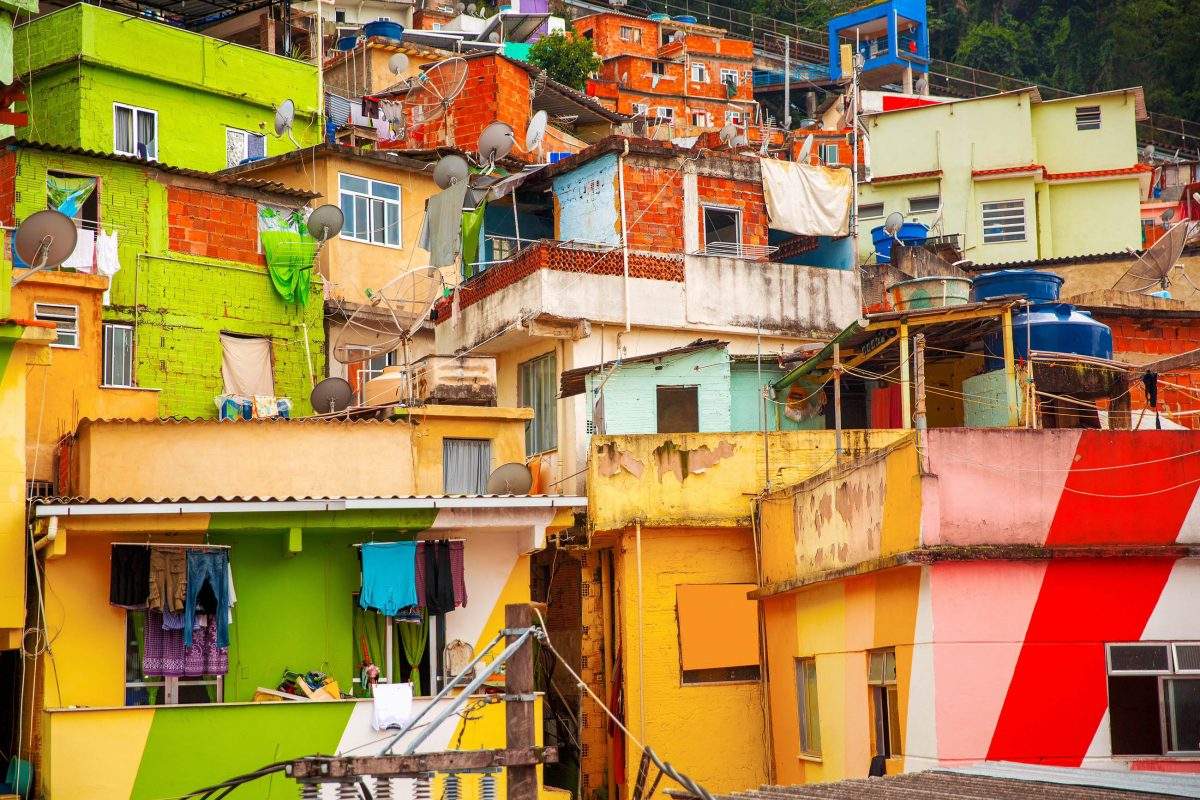
Besonders gut gelang die touristische Vermarktung in der farbenfrohen Favela Santa Marta in Botafogo, die sogar zu unseren Top 10 Sehenswürdigkeiten von Rio de Janeiro zählt.
Santa Marta ist eine der 965 in Rio registrierten Favelas und besteht aus rund 5.000 Holzhäusern und 2.000 Ziegelhäusern, in denen an die 8.000 Menschen wohnen. Vier Kindergärten, zwei Sportplätze und eine Sambaschule sorgen für Unterhaltung, drei Bäckereien und ein Supermarkt sichern die Versorgung mit Lebensmitteln.
Drei Militäreinheiten gewährleisten die Sicherheit der Bewohner – und der Besucher. Denn mittlerweile sind die Hütten der Favela zu einer Touristenattraktion und ihre Bewohner zu Fremdenführern avanciert. Am 30. August 2010 weihte der Bürgermeister von Rio das Programm Rio Top Tour ein und Santa Marta gehörte ab sofort zu den offiziellen Sehenswürdigkeiten von Rio de Janeiro.
BILDER: Favela Santa Marta in Rio de Janeiro
Fotogalerie: Favela Santa Marta in Botafogo, Rio de Janeiro
Santa Marta – Rios Slum mit Radiosender und gratis W-Lan
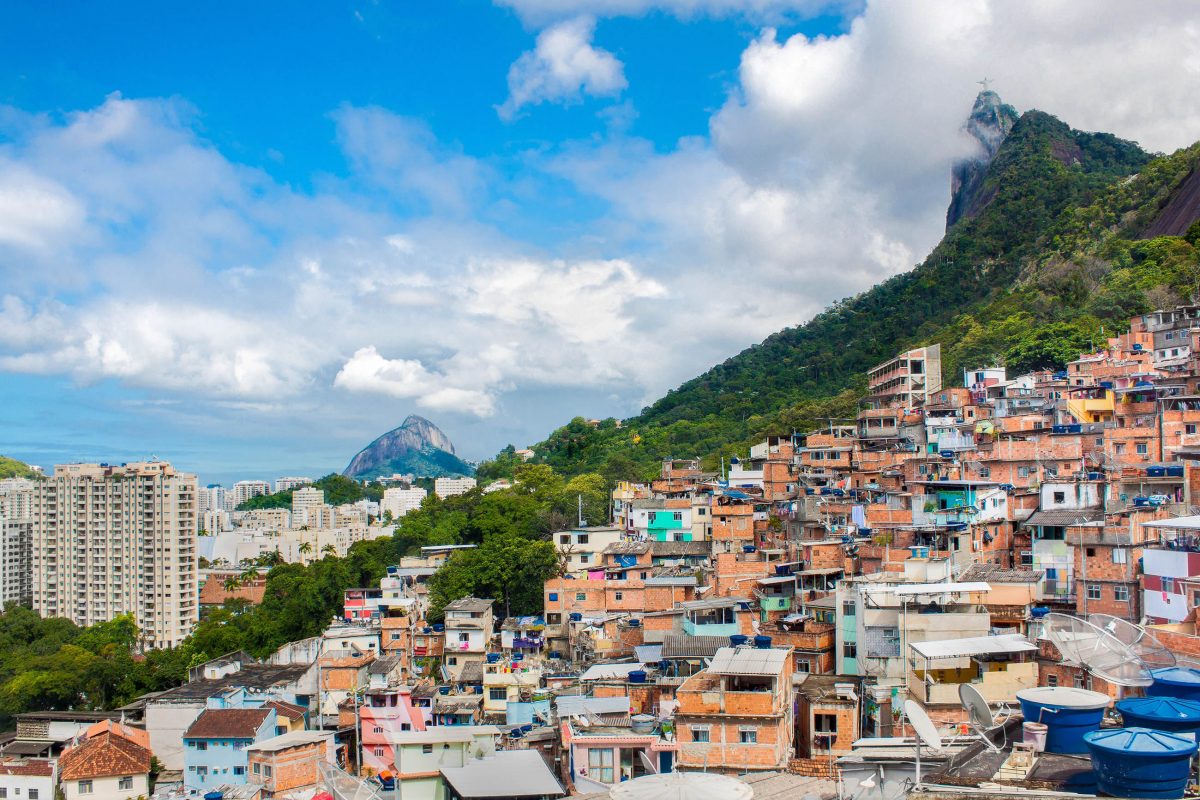
Seit den 1940er-Jahren wuchs der Santa Marta Slum im Süden von Rio, bis er das gesamte Areal bis zur Spitze des Hügels bedeckte. Die Metamorphose der Favela, auch Dona Marta genannt, begann am 28. November 2008. Santa Marta war damals das erste Armenviertel, in dem die so genannte Befriedungspolitik eingesetzt wurde.
Ein enormes Aufgebot an Militärpolizei erreichte innerhalb kürzester Zeit die nahezu vollständige Eindämmung von Drogenhandel und Gewalt. Diese Maßnahme war damals im Hinblick auf die Fußball-Weltmeisterschaft 2014 und die Olympiade 2016 absolut unerlässlich.
Ein Großteil der Hütten wurde an das Wasser-, Kanal- und Stromnetz von Rio angeschlossen und die Müllabfuhr kümmerte sich nun auch um die engen Gassen auf dem steilen Hügel. Seit 2009 gibt es sogar kostenloses W-Lan für alle, ein Jahr später folgte ein eigener Radiosender, der auf der Frequenz 103,3 MHz ganz Botafogo mit Nachrichten aus der Favela versorgt.
Besuch von Santa Marta in Rio
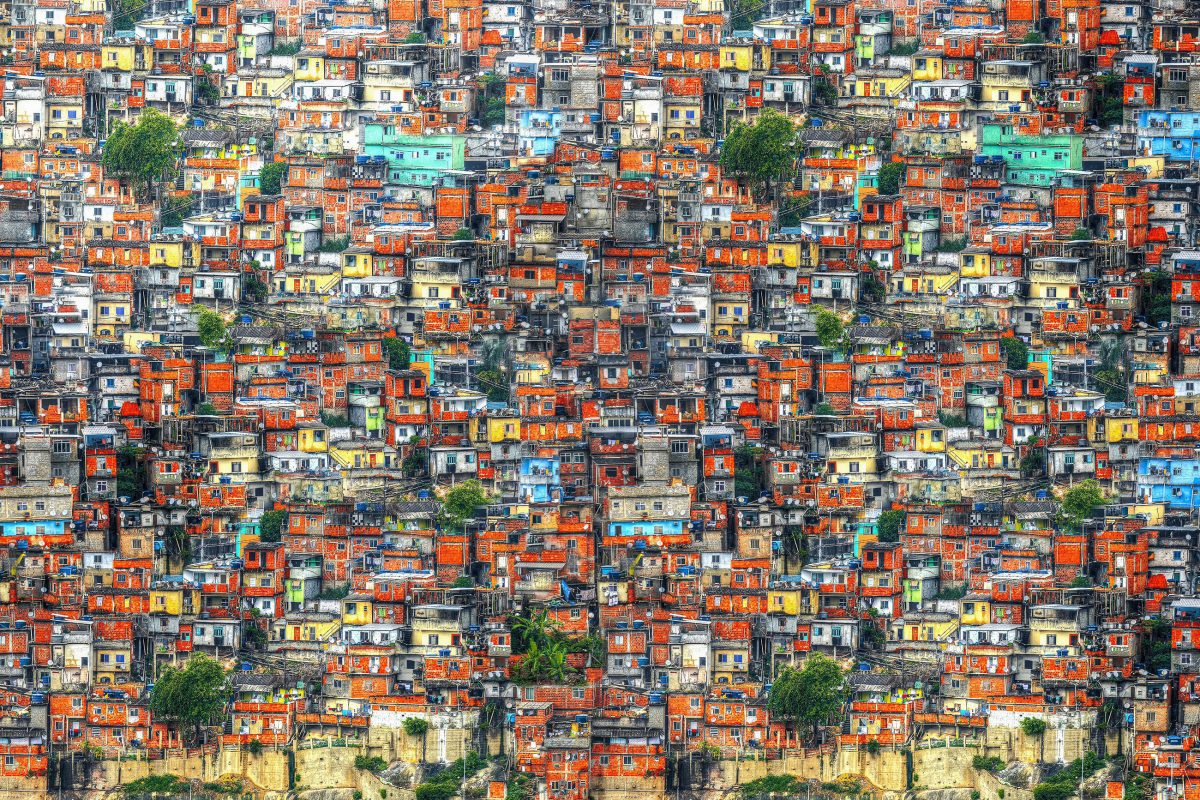
Der Grundstein für die Verwandlung von Santa Marta in eine Touristenattraktion war damit gelegt, doch den Großteil seiner Besucher hat die Favela der Gondelbahn zu verdanken, die Touristen hoch über den Dächern von Rio schwebend auf den Hügel von Santa Marta bringt.
Schon auf der Fahrt mit der Standseilbahn bleibt so manchem Besucher vor Staunen der Mund offen stehen. Je höher die Fahrt geht, desto gewaltiger wird das Postkarten-Panorama von Rio. Der Blick fällt über die Dächer der Stadt vom Zuckerhut bis hinunter zur berühmten Copacabana und zum Strand von Ipanema.
Santa Marta und Rio von oben

Oben angekommen liegen einem die Holz- und Blechdächer der Favela zu Füßen. Kinder spielen in den engen, verwinkelten Gassen und Wäsche trocknet zwischen völlig planlos und teilweise scheinbar übereinander errichteten Häusern.
Vor dem Bau der Seilbahn mussten die Bewohner von Santa Marta 788 Treppenstufen an einem Hang mit 40° Steigung bewältigen. Heute funktioniert die Besichtigung der Favela mit größtmöglicher Bequemlichkeit inklusive Fremdenführer, Wegweiser zu Sehenswürdigkeiten und Jeep-Safaris.
Es ist hauptsächlich die Neugierde, die Besucher in die engen Gassen des Elendsviertels treibt, denn von zu Hause kennt man so etwas nicht. Die Bewohner von Santa Marta freuen sich zum Großteil über das Interesse, das ihnen plötzlich entgegengebracht wird, etwas, das sie von ihren Landsleuten nicht kennen.
Tipp: Die Einwohner von Santa Marta zeigen den Touristen mit Stolz ihr Zuhause. Es sind allerdings nicht alle damit einverstanden, sich fotografieren zu lassen. Zur Sicherheit vorher kurz fragen.
Michael Jackson und schnelle Autos in Santa Marta
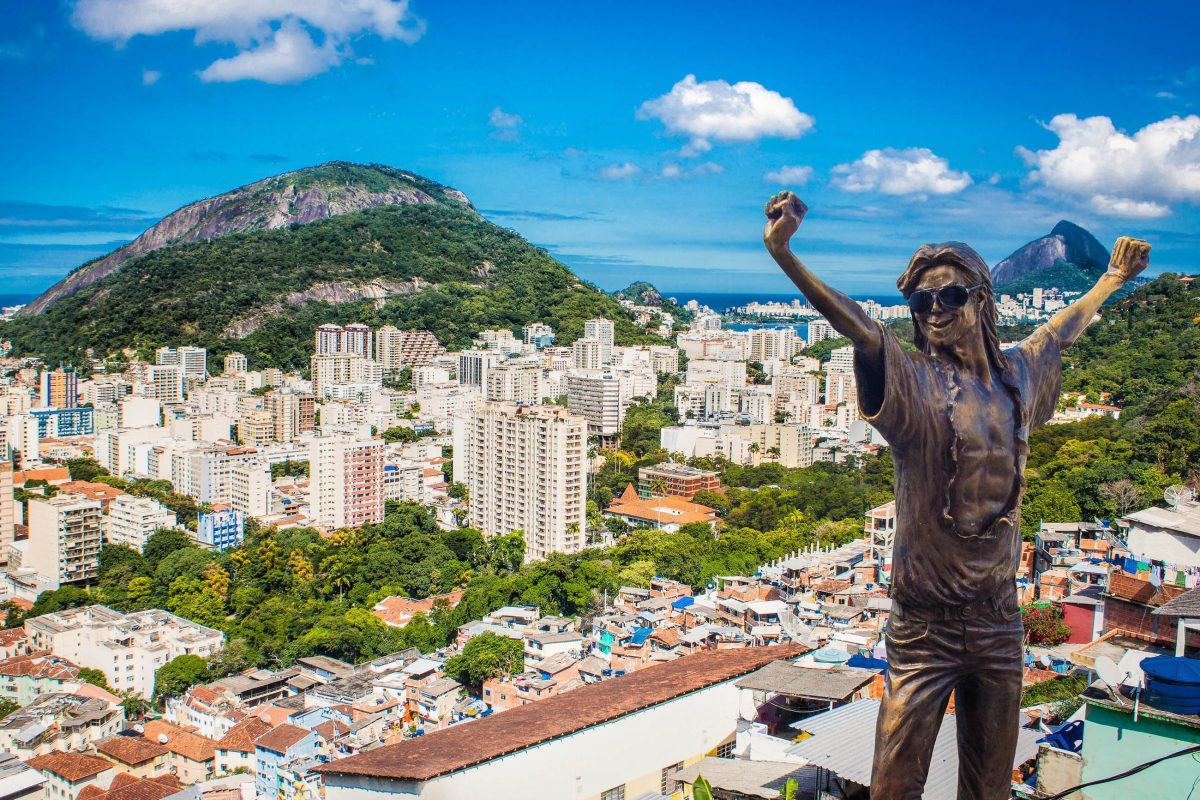
Aufmerksame Musikfans kennen unter Umständen die Kulisse von Santa Marta, denn das Armenviertel war im Jahr 1996 einer der Drehplätze für Michael Jacksons Musikvideo zu „They don’t care about us“ mit der berühmten Trommelgruppe Olodoum. Damals musste die Erlaubnis für den Dreh noch beim hiesigen Drogenboss eingeholt werden. Der berühmt-berüchtigte Marcinho VP stellte dem Popstar großzügigerweise einen Leibwächter zur Seite.
Auf dem Balkon, auf dem der King of Pop mehrmals zu sehen ist, erinnert heute eine Statue des Karikaturisten Ique an ihn. Das Michael Jackson Denkmal wurde am 26. Juni 2010, etwa ein Jahr nach seinem Tod, aufgestellt. Ebenfalls in diesem Video zu sehen ist übrigens der Pelourinho. Der heute berühmteste Platz von Salvador da Bahia machte eine ähnliche Verwandlung durch wie die Favela Santa Marta.
Auch große Teile des Blockbusters „Fast and the Furious 5“ wurden in der Favela Santa Marta gedreht.





